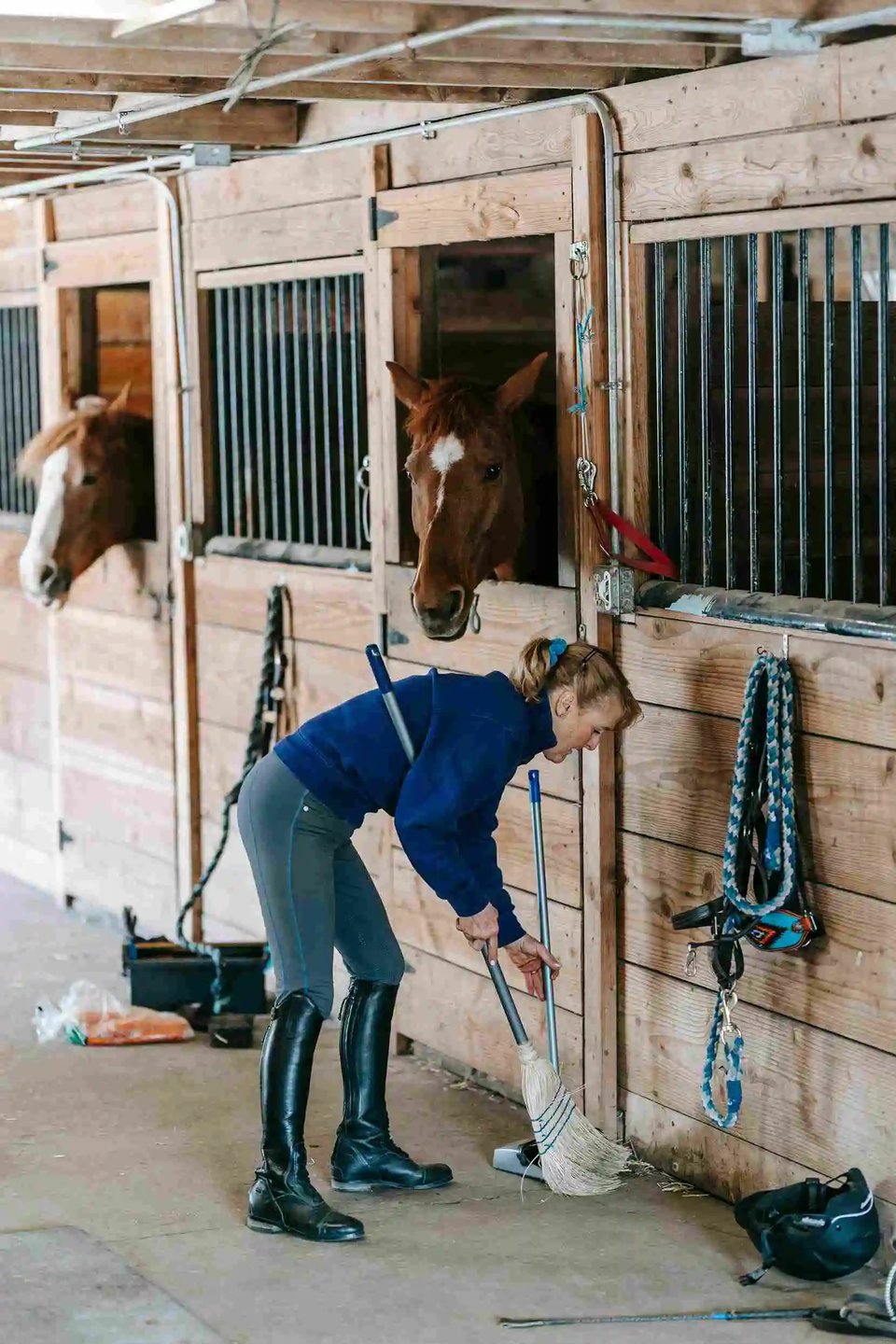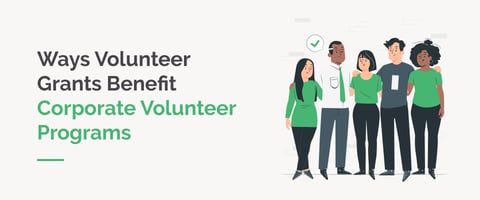How Digital Volunteer Profiles Can Help Nonprofits Leverage Individuality
The best way to connect with the individuality of volunteers is through digital volunteer profiles. Individuality is incredibly valuable to nonprofits. Every individual brings different perspectives, skills, and ideas to the workplace. When nonprofits are able to leverage nuances of individuality in decision making, they can evolve programs to align better with community needs and operate more efficiently with available resources.
Nonprofits understand this reality. They often take diligent strides to integrate the unique capacities and perspectives of employees within their programs and processes. When it comes to volunteers, however, we often overlook their individuality. We see them as tools to getting a project done on time, to meeting a particular goal. It is also difficult to include resources for connecting with each individual volunteer into our budgets.
This is why modern digital tools like volunteer management software have become game-changers. They empower individuals to create their own volunteer journey, through digital volunteer profiles with dashboard functions and seamless linkages to social media and communications systems. Volunteers write their own reflections, which nonprofit managers can read through, store their own notes, search through and integrate directly into their storytelling narratives.
Why It’s Essential to Understand Volunteer Individuality
Every volunteer is special and unique. This reality can be a boon to your organization if you apply yourselves to understanding volunteer interests, abilities, and perspectives. Here are a few of the top reasons why it is so essential to know your volunteers.
- Identifying Bias. The more individual perspectives that give feedback to your work, the stronger you can make your programs. Everything has bias, including nonprofit program design. Research from specialists at Gladstone Institutes indicates that the best way to mitigate unconscious bias is to include the widest array of perspectives as possible and facilitate open discussion. If you are like most nonprofits, you are understaffed. Looking to your staff for bias control and feedback about your programs is probably not good enough! Volunteers can fill this gap. They add different perspectives because of age, race, gender, geography, experience or specialty. If you solicit and listen to their feedback, they can help you make your programs more diverse.
- Helping You Meet Your Goals. You may come across a volunteer for the first time to help with a specific event or task. They likely have a wide range of skills and abilities that could be useful in other program areas as well. How would you know if you have not requested a detailed resume, or searched through their profile?
- Making Sure They Are Happy. How can you know the best ways to reward and recognize your volunteers if you do not know what their interests or hobbies are? Similarly, how do you know which volunteer jobs and events to which to invite them if you do not know they are parents? Or that they work the night shift at their paying job? To make sure your volunteers are pleased, and excited to help, you need to understand their particular circumstances.
 A volunteer may help at a community horse stable because she loves horses, she wants to get outside and do something meaningful yet active a few times a week, or because she wants rewards like free trail rides. Understanding the “why” behind volunteers choosing their opportunities is the best way to connect.
A volunteer may help at a community horse stable because she loves horses, she wants to get outside and do something meaningful yet active a few times a week, or because she wants rewards like free trail rides. Understanding the “why” behind volunteers choosing their opportunities is the best way to connect.
Your volunteers are worth their weight in gold! That’s why, Golden gives you Karats – a social currency that recognizes the contribution of your volunteers in a unique way. Check it out!
Why Getting to Know Volunteers Has Been So Difficult
Before the advent of digital technology and digital volunteer profiles, the only real way to try to collect data from volunteers was manual processes that were time consuming and flawed. Nonprofit managers may have asked volunteers to fill out a questionnaire when they showed up for an event. Those papers likely sat on the corner of their desks for weeks or months.
Maybe they were lucky enough to have an intern digitize the statistics for them. Possibly they were savvy enough to request the data via a digital tool. In both cases, they probably lacked software tools to help them analyze trends or impact data.
The real flaw in manual systems, however, is not the administrative nightmare of paper processes. Rather, it is in the fact that questionnaires and pre-prepared data collection tools are designed by the nonprofit rather than the individual volunteer. This leads to four problems.
- Individuality needs to be expressed by the individual, not prodded by a third party. In a pre-designed questionnaire, the individual is not given a space to express their style, perspective, and overall individuality. The valuable information about individuality is that which is offered by the volunteer. Through their self-expression, we learn what is important to them and what their unique perspectives are.
- Data collection methods of this type are dangerous, and volunteers avoid providing information that can compromise their digital security and overall privacy. Manual processes leave too much room for data being compromised, or used in unethical ways.
- The information, and the interpretation of it, will have layers of bias. Research shows there are at least 48 different types of bias in questionnaires, from the wording of questions, to faulty scaling such as having insufficient choices for respondents to answer a question.
- Responses are anchored to the moment in time they were submitted, and may not have any bearing on today’s realities. People change over time, and that evolution is a good thing - volunteers build skills, interests, and facets of their identity. For volunteer organizers to meaningfully close opportunity gaps, they must be accommodating to how each volunteer identifies today. This is much better accomplished with digital volunteer profiles that every volunteer can update whenever there is reason to do so.
How Digital Volunteer Profiles are Simplifying and Improving the Getting-to-Know-You Process
Digital tools like Golden wipe away the errors of the past and improve upon the volunteer individualization process. The key difference is that volunteers themselves offer their personal data through interactive dashboards in digital volunteer profiles. This means that their data is specific to what drives them as individuals. The principal benefits of digital volunteer profiles include the following.
- We can clearly see their passions and their perspectives, as they define them. Volunteers can easily link their favorite social media and regular media, so we can not only read but see what drives them.
- Since they upload their own resumes and work history into digital volunteer profiles, we get a more holistic view of their abilities and skills. Using a personal platform makes it more difficult for volunteers to exaggerate their capacity. You can easily cross-reference work experience and education with social media apps and corporate data. This is important because 40% of people lie or exaggerate on their resumes!
- It is also completely secure, with encryption and protections against hacking or unethical use of information. This makes volunteers feel more secure and offer more information through digital volunteer profiles.
- You can still ask them to fill out a digital questionnaire to pull in specific data you may need. The difference is that platforms like Golden give you methods to analyze the data and create impact reports so that the information is helpful to your future program design.
- What is more, you can engage volunteers on a whole new level, soliciting an open forum of feedback to weed out your biases and improve your projects.
 It is important to consider what types of audiences a volunteer is hoping to engage with, especially if you need someone to work with children or another special age group!
It is important to consider what types of audiences a volunteer is hoping to engage with, especially if you need someone to work with children or another special age group!
More Ways Nonprofits Gain with Digital Volunteer Profiles
When we use digital platforms, we automatically receive updates to volunteers which make every aspect of the volunteer journey easier for nonprofits. On the flip side, volunteers using digital volunteer profiles build more trust in nonprofits who are personally engaging with them.
- Volunteers will offer their preferred methods of communication through digital volunteer profiles. This way you can engage better and assure you are not over-texting or over-mailing. Streamlined communication saves you on your administrative time and also helps keep volunteers happy.
- Volunteers can change their schedules and update their availability so you know which opportunities are best for recruitment.
- You can automate scheduling for volunteer onboarding online via digital volunteer profiles. You might even provide digital programs on the system for them to engage with at their convenience.
- Nonprofits can take advantage of AI on platforms like Golden to apply machine learning to search through volunteer profiles for specific interests and skills, and then receive automated updates for availability.
How to Help Volunteers Use Digital Profiles to Improve their Journey
So much data and so many applications of it may seem daunting. What you should do is take it step-by-step and brainstorm, as a team, how you might best apply digital volunteer profiles to improve not only your own systems, but also the volunteer journey. Thinking from the perspective of your volunteers is the best place to start! Here are some questions to ask:
- Why is it important for volunteers to express their individuality in a volunteer profile? Think about the audiences they are trying to reach, for instance. They likely are sharing with family, linking with corporate peers, or seeking new relationships from a broader, like-minded community. The most important factor is connection. This means that you should consider how your programs better help volunteers connect, and with whom, when designing opportunities.
- What types of experiences are they looking for? People volunteer for a myriad of reasons. They want to learn something. They are lonely. They are compelled to do so by their companies. They will likely state the reasons for volunteering and the types of experiences that interest them in their profile. Think about how your volunteer roles can help them meet those goals.
- What kind of reward or recognition will best serve them? You want to design recognition and rewards based on what serves the volunteers most. If they need praise about their skills for their corporate manager, then regularly post on their dashboard and rate them highly as serving you in that capacity! If they want rewards, then advertise opportunities like Golden’s Karats system. The program automates rewards by hours of service and jobs completed. Or, if they are looking for visuals of their community impact, link with their social media and send them videos and pictures.
Digital Volunteer Profiles - A New Era for Nonprofits
Volunteer platforms like Golden are a streamlined way for nonprofits to recruit and engage volunteers. They help with administration and aid the recruitment process. They also enable nonprofits to connect with volunteers in new ways that deepen the nonprofit program and the volunteer journey.
Psychological studies show that the most important message in online platform communication between volunteers and nonprofits is one of values. Volunteers are looking to connect with meaningful experiences through their work, of shared values with causes.
This is why it is so critical, beyond the practical applications of streamlining administration and finding better recruits, to really understand volunteers at the individual level. If you understand what really drives them, and how they communicate those values and passion, you can begin to frame your own messaging in the best way possible to reach your intended audience.



